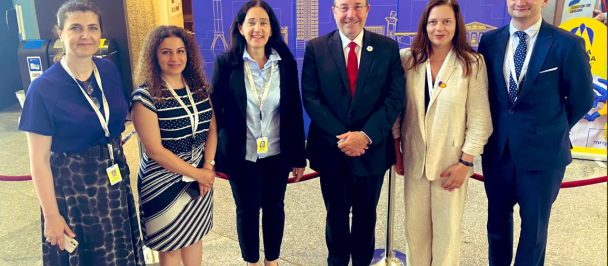Statement by Achim Steiner, UNDP Administrator at the Side event on “Sustainable Urban Mobility: What can YOU(TH) do?”
Organized by UN Youth Delegates
Permanent Mission of Germany to the UN, New York
11 July 2018
Ladies and gentlemen,
Allow me to thank the Youth delegates of Germany, Belgium, the Netherlands, Sweden, Estonia and Denmark, and the Permanent Representative of Germany for convening this discussion and for a strong commitment to the High-Level Political Forum.
By 2050, cities will be home to 70% of the projected 9 billion people living on the planet, leaving no doubt that the success or failure of the 2030 Agenda will be determined in cities.
National and city governments can encounter a broad range of challenges due to the fact that extreme poverty is often concentrated in urban spaces. Making cities sustainable means ensuring access to safe and affordable housing, investing in public transport, creating green, public and safe spaces, and improving urban planning and management in a way that is both participatory and inclusive. The urban landscape goes way beyond the physical structure; it also has to do with the way in which we manage affairs and support peoples’ wellbeing and development in the urban setting.
With those challenges also comes the enormous power of cities to change the world. These dynamic and complex organisms generally concentrate knowledge and resources, capacities to innovate, universities, research centers, companies, and networks of civil society organizations. Cities are home to millions of young people. Globally, 85 per cent of the world’s young people live in developing countries and an ever-increasing number of them are growing up in cities. Young people, and particularly urban young people, should be supported and promoted as agents of change, innovators and leaders.
In UNDP, we are fully committed to the implementation of the New Urban Agenda and the 2030 Agenda and recognize that the complex, inter-connected nature of urban development issues requires us to go beyond sector-specific or technical solutions and to place young women and men at the centre.
- Urban development should engage all stakeholders and partners, in particular youth, whom already demonstrate their resilience and capacity to innovate;
- Enhancing urban infrastructure must go together with efforts that make cities more “inclusive, safe, resilient and sustainable” --- this includes youth empowerment, inclusive economic growth, jobs and livelihoods, responsive local governance, anticorruption efforts, rule of law, disaster risk reduction and resilience, among others.
- A bottom-up approach and meaningful youth participation in local policy-making and accountability are vital. Young people experience challenges first-hand and should have the space and capacities necessary to formulate and implement solutions tailored to their contexts.
- Referring to smart cities, smart citizens play a fundamental role. Who is better placed than young people to reflect on new behaviours that can drive urban innovation, support cities’ sustainability goals, push the frontiers, and feed the social, political, economic and cultural vibrancy of cities?
- As we are committed to leaving no-one behind, we must also make a conscious effort to address persistent stereotypes about young people. As outlined in the independent Study on Youth, Peace and Security, negative assumptions about youth do not just have to do with demographics but are also associated with rapid population movements and growing youth urbanisation. These have tended to produce marginalization, discrimination and prejudice, often sparking anti-immigrant populist movements that stimulate social discord and violence. Young migrants, refugees and internally displaced people are still often seen as potential threats and a drain on public services and the social security system, rather than resilient and potentially innovative.
Thank you and I look forward to a stimulating conversation.

 Locations
Locations
